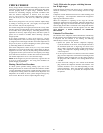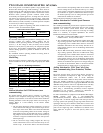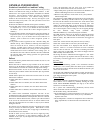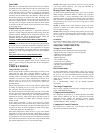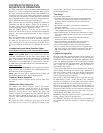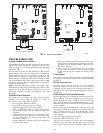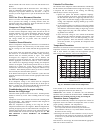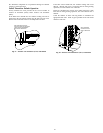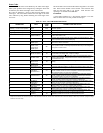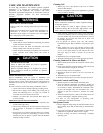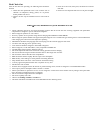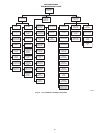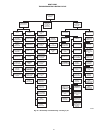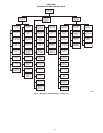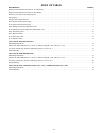79
Final Check--Out
After the unit has been operating, the following items should be
checked.
1. Check that unit operational noise is not excessive due to
vibration of component, tubing, panels, etc. If present,
isolate problem and correct.
2. Check to be sure caps are installed on service valves and are
tight.
3. Check to be sure tools, loose parts, and debris are removed
from unit.
4. Check to be sure all panels and screws are in place and tight.
PURONR (R--410A) REFRIGERANT QUICK REFERENCE GUIDE
S Puron refrigerant operates at 50--70 percent higher pressures than R--22. Be sure that servicing equipment and replacement
components are designed to operate with Puron refrigerant.
S Puron refrigerant cylinders are rose colored.
S Recovery cylinder service pressure rating must be 400 psig, DOT 4BA400 or DOT BW400.
S Puron refrigerant systems should be charged with liquid refrigerant. Use a commercial type metering device in the manifold hose
when charging into suction line with compressor operating
S Manifold sets should be 700 psig high side and 180 psig low side with 550 psig low--side retard.
S Use hoses with 700 psig service pressure rating.
S Leak detectors should be designed to detect HFC refrigerant.
S Puron refrigerant, as with other HFCs, is only compatible with POE oils.
S Vacuum pumps will not remove moisture from oil.
S Do not use liquid--line filter driers with rated working pressures less than 600 psig.
S Do not leave Puron refrigerant suction line filter driers in line longer than 72 hours.
S Do not install a suction--line filter drier in liquid line.
S POE oils absorb moisture rapidly. Do not expose oil to atmosphere.
S POE oils may cause damage to certain plastics and roofing materials.
S Wrap all filter driers and service valves with wet cloth when brazing.
S A factory approved liquid--line filter drier is required on every unit.
S Do NOT use an R--22 TXV.
S If indoor unit is equipped with an R--22 TXV or piston metering device, it must be changed to a hard shutoff Puron TXV.
S Never open system to atmosphere while it is under a vacuum.
S When system must be opened for service, recover refrigerant, evacuate then break vacuum with dry nitrogen and replace filter
driers. Evacuate to 500 microns prior to recharging.
S Do not vent Puron refrigerant into the atmosphere.
S Do not use capillary tube coils.
S Observe all warnings, cautions,andbold text.
S All indoor coils must be installed with a hard shutoff Puron TXV metering device.



